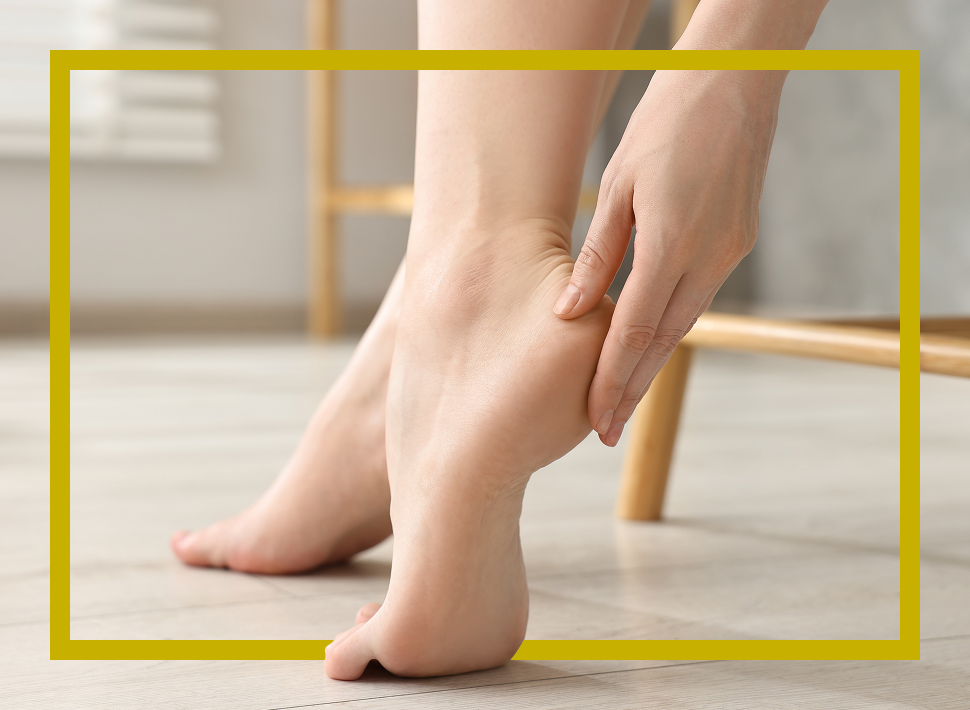A little callus is completely normal – it protects the skin on your feet and hands from friction and pressure. But if it becomes too thick, it can tear, pinch or even cause pain.
Removing calluses makes sense – but only with the right method. Because if you proceed too roughly or too frequently, you risk more harm than good.
How do corneas develop in the first place?
Calluses form where the skin is subjected to constant stress – for example on the heels, balls of the feet, toes or hands. Friction or pressure causes the top layer of skin to thicken in order to protect deeper structures.
This protective function is particularly important on the feet. However, if too much keratinized skin accumulates – also known as hyperkeratosis – it becomes a burden and should be gently removed.
Removing thick calluses – why caution is better
Thick calluses often appear hard and irritating – but if you remove them too aggressively, you risk skin irritation, minor injuries or even inflammation.
Above all, cutting with blades or excessive planing can weaken the skin instead of relieving it. It is better to
Removing calluses – you should avoid these mistakes
People who remove calluses from their feet often mean well – but make typical mistakes that do more harm than good to the skin:
- Methods that are too rough: Planes, razor blades or sharp knives can cause minor injuries and promote infections.
- Too frequent applications: Using a file every day irritates the skin unnecessarily.
- Soften and remove immediately: A long footbath makes the skin sensitive – you should be careful afterwards.
- No care afterwards: Without a moisturizing cream, the skin dries out again quickly – the calluses then often return more quickly.
When removing calluses from the hands in particular, proceed gently, do not rub too hard and apply a good amount of cream afterwards.
Home remedies for calluses – what really helps?
Many people rely on home remedies to remove calluses – with sometimes surprisingly good results if used correctly:
- Foot bath with baking soda or salt: Gently softens the callus and makes it easier to remove afterwards.
- Apple cider vinegar or lemon juice: Are used as natural acids – use sparingly to avoid skin irritation.
- Olive oil or honey: Nourish dry areas and help to keep the skin supple.
It is important to note that home remedies cannot replace professional care, but can provide gentle support for regular foot care – especially in the case of mild keratinization.
Gentle alternatives
If you want to remove calluses regularly and gently, you should use gentle methods. Instead of planing or cutting, fine-pored files or pumice stones are a better choice – especially after a short foot bath.
An effective supplement to mechanical removal is daily care with special creams. The following have proved particularly effective
The cream contains 20% urea – a natural moisturizing factor that softens hardened areas of skin and moisturizes at the same time. It is supplemented by the
Applied regularly – ideally in the morning and evening – the cream helps the skin to remain elastic, supple and resistant. This not only removes calluses, but also prevents the formation of painful fissures.
When to see a pedicurist or doctor?
In most cases, calluses are easy to care for yourself – regularly, gently and with the right products. However, there are situations in which professional help is useful:
- If the cornea is very thick or severely cracked
- For pain, pressure points or open sores
- If cracks (fissures) bleed or become inflamed
- For underlying diseases such as diabetes or circulatory disorders
A medical pedicure can not only professionally remove existing calluses, but also help to identify the causes – and prevent further skin problems.
Conclusion
Removing excess calluses is an important part of skin care – especially on feet that have to do a lot every day. It is important not to be too radical, but to care regularly and gently.
Whether with gentle home remedies, files or creams such as Spirularin® SR chapped skin cream – if you take action at an early stage, you can prevent hardened skin and maintain the skin’s natural balance.
However, professional advice should always be sought in the event of severe keratinization, cracks or pre-existing conditions. This will keep the skin healthy, supple and resistant in the long term.
FAQ
Experten-Tipp entstand in Zusammenarbeit mit:
Patrick Günther
Patrick Günther completed his pharmacy studies in Hamburg and, after obtaining his licence to practise, worked for several years in marketing and sales in the pharmaceutical industry. In 2003, he took over ocean pharma, the company founded by his father in Reinbek near Hamburg in 1978. Together with his business partner, he patented the important processing and standardisation process for the microalgae active ingredient Spiralin® and developed a wide range of medical cosmetics and foot care products based on Spiralin®.




